Shae and I flew from Mauritius to South Africa today for the second half of our international trip. We spent a couple of weeks in Mauritius and I know that a lot of our readers won’t know much – if anything – about the island. To be fair, before visiting I didn’t know much about it either! Several people said “I had to Google where you’re going!” so if you did too, you’re not alone.
Over the course of the next week or two we’ll be publishing reviews of the hotels we stayed at and writing a post about everything that we did there, but before that I wanted to write this separate post about Mauritius – where it is, some of its history and our impressions of the island.
Where Is Mauritius?
Mauritius is an island in the Indian Ocean. It’s part of Africa and is to the east of the mainland continent and further east of Madagascar.
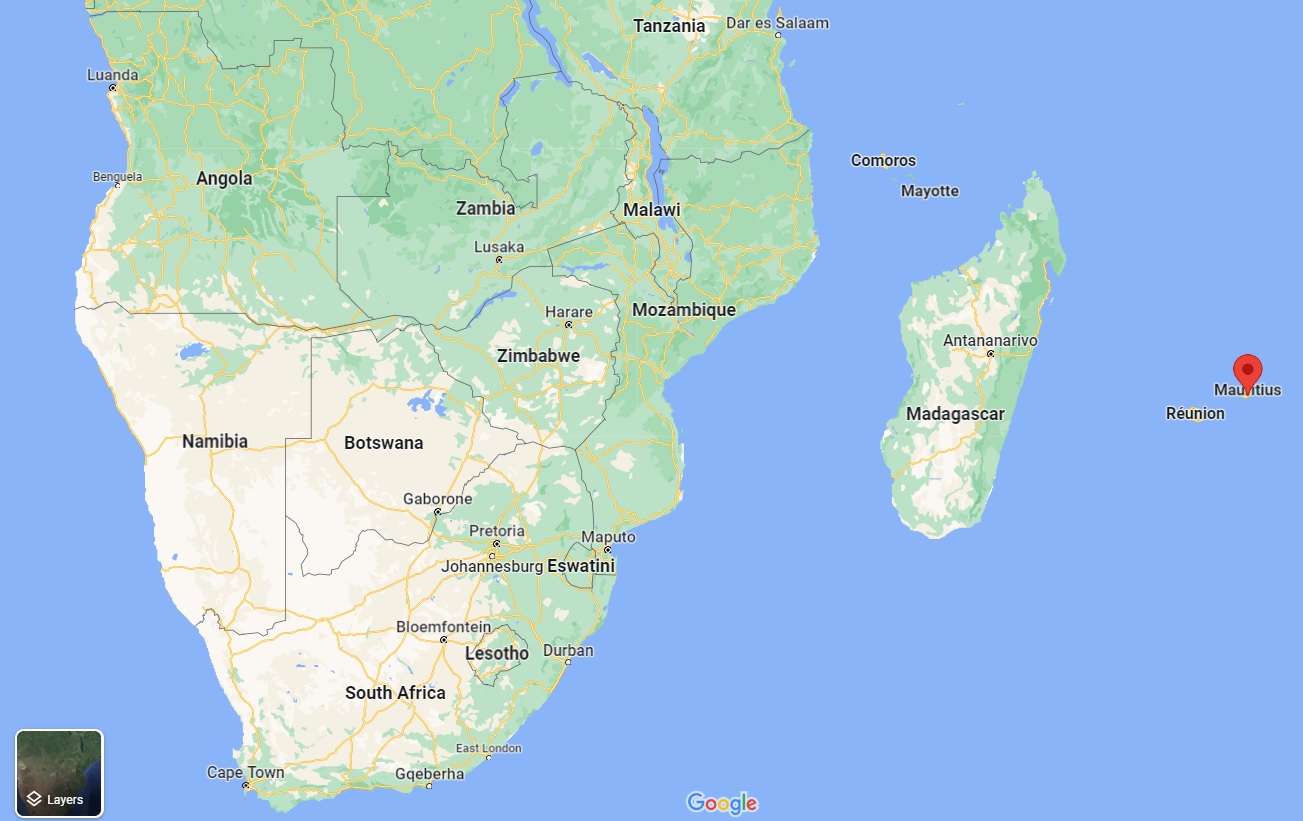
Some Mauritius Geography
Mauritius is a 790 square mile island nation which makes it one of the smaller countries in the world. In addition to the main island, it has a number of smaller islands including Rodrigues which is about 350 miles to the east of Mauritius itself. Mauritius has two airports – one on the main island and one on Rodrigues.
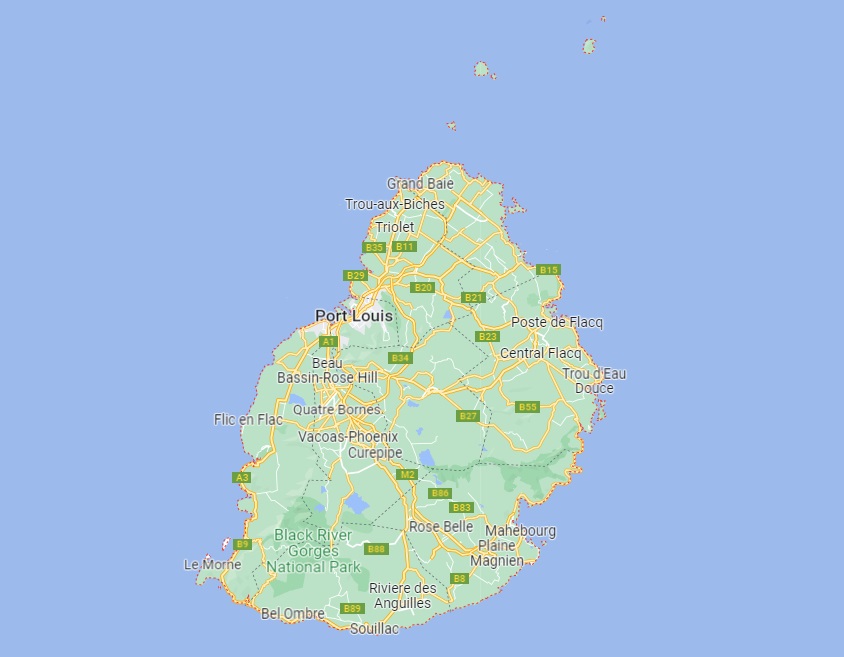
Mauritius’s main airport is in the southeast part of the island, where it says Plaine Magnien on the above map. Its capital city – Port Louis – is, as its name suggests, a port city and is on the northwest part of the island. During our two weeks in Mauritius, we stayed in three places. We started in Flic en Flac on the western side of the island, moved up to near Trou-aux-Biches and then finished with a few nights near the airport in Plaine Magnien.
Mauritius has three National Parks – Black River Gorges National Park, Bras d’Eau National Park and Islets National Park. Black River Gorges National Park is the largest of the three, while Islets National Park consists of eight small islands off the coast of Mauritius.
The island was created through volcanic activity, although that’s now dormant. What it left behind was both a beautiful landscape and incredibly fertile soil which is why one of its key industries is sugar cane production. Driving through the country, we saw fields and fields of sugar cane. Mauritians use all parts of the sugar cane plant – for sugar, rum, fuel, animal feed and much more. One of its most popular attractions is L’Aventure du Sucre – a museum in a former sugar factory that’s dedicated to the cultivation of sugar (it’s well worth a visit).
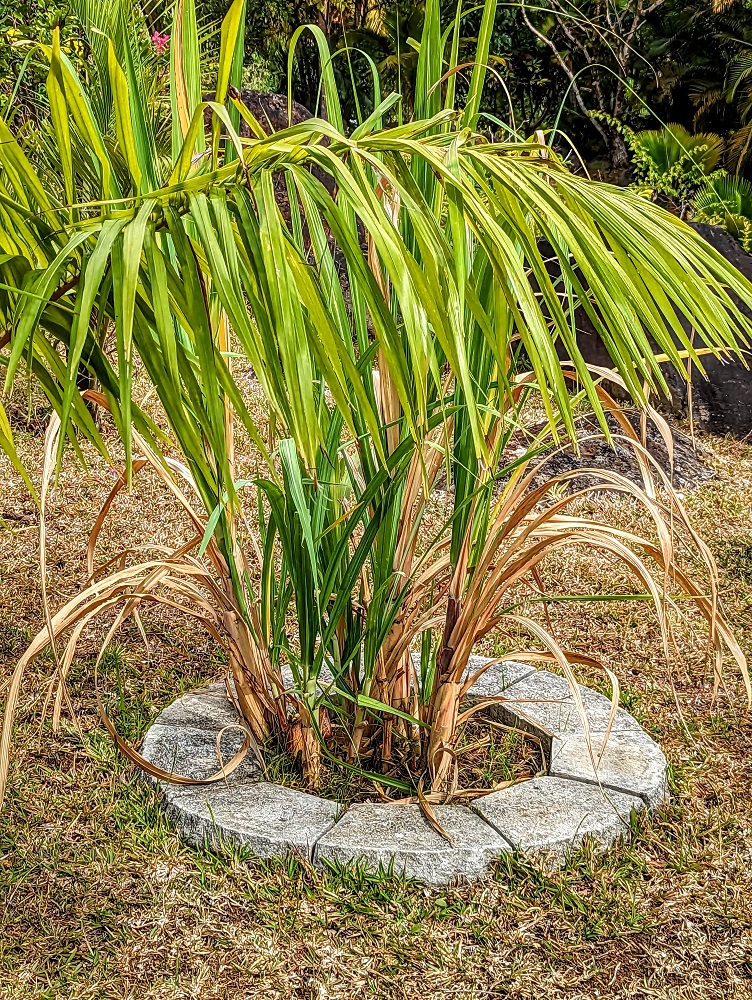
Some Mauritius History
Despite it being off the coast of Africa, it was actually some Arabian sailors who first discovered the island and it was uninhabited at the time. Ownership of the island changed over the course of centuries. Portugal later discovered Mauritius, then the Netherlands took it over. France later took over the reins before the UK battled the French in the Napoleonic wars and gained control. Mauritius eventually gained independence in 1968.
The island has some fascinating demographics. Although it’s part of Africa, two-thirds of the country have Indian heritage. A large part of the cause of this was indentured servitude. In its history, almost half a million people moved to Mauritius as indentured servants, usually to work in the sugar cane fields after slavery was abolished. The majority of those were from India and there’s now a World Heritage site on the island called Aapravasi Ghat which is dedicated to sharing their history.
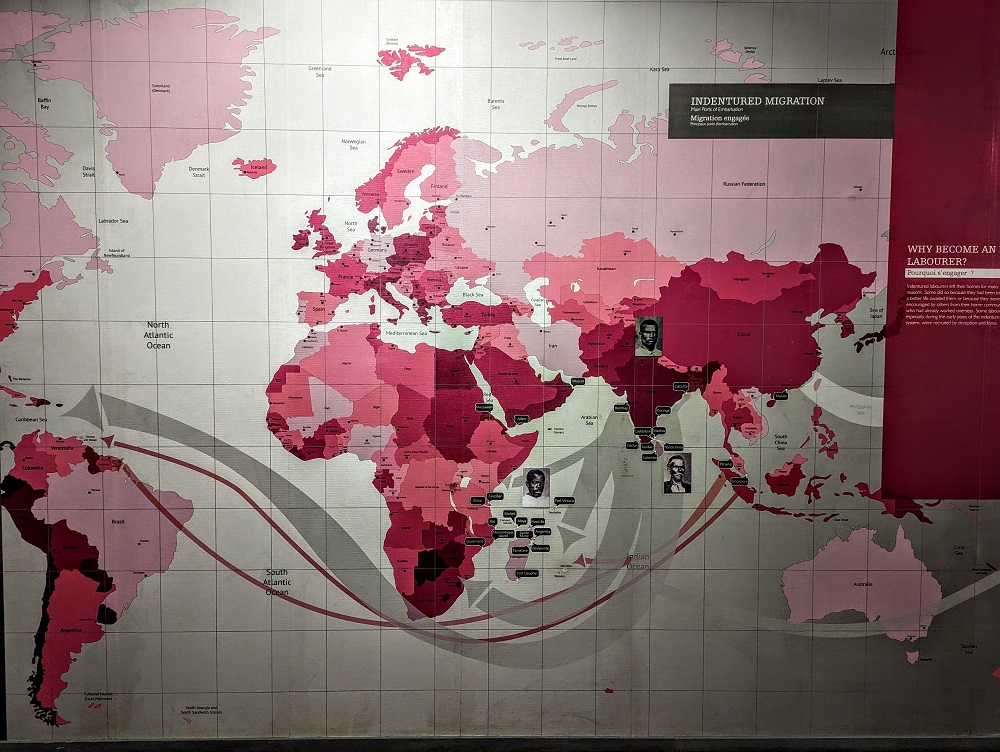
As a result of that strong Indian heritage, the main religion of Mauritius is Hinduism, with about half the country practicing it. Christianity is the second most common religion, with about a third of the country practicing it.
The (sort of) official language of Mauritius is English, although French is also commonly spoken, as is Mauritian Creole. The driver we had on one of our excursion days said that Mauritians tend to learn multiple languages from an early age – the three mentioned above, as well as some kind of Asian (“Oriental” as described by our taxi guide) language that seems like it’s a blend of dialects.
Before settlers came to Mauritius, there was no sugar cane on the island. There were also no animals on the island – only birds. It was settlers that brought all of these things to Mauritius, changing it forever.
One of the birds that used to be on the island was the dodo, although it was a flightless bird. Mauritius is thought to be the only place where the dodo lived, but unfortunately it was hunted into extinction in the 1600s.
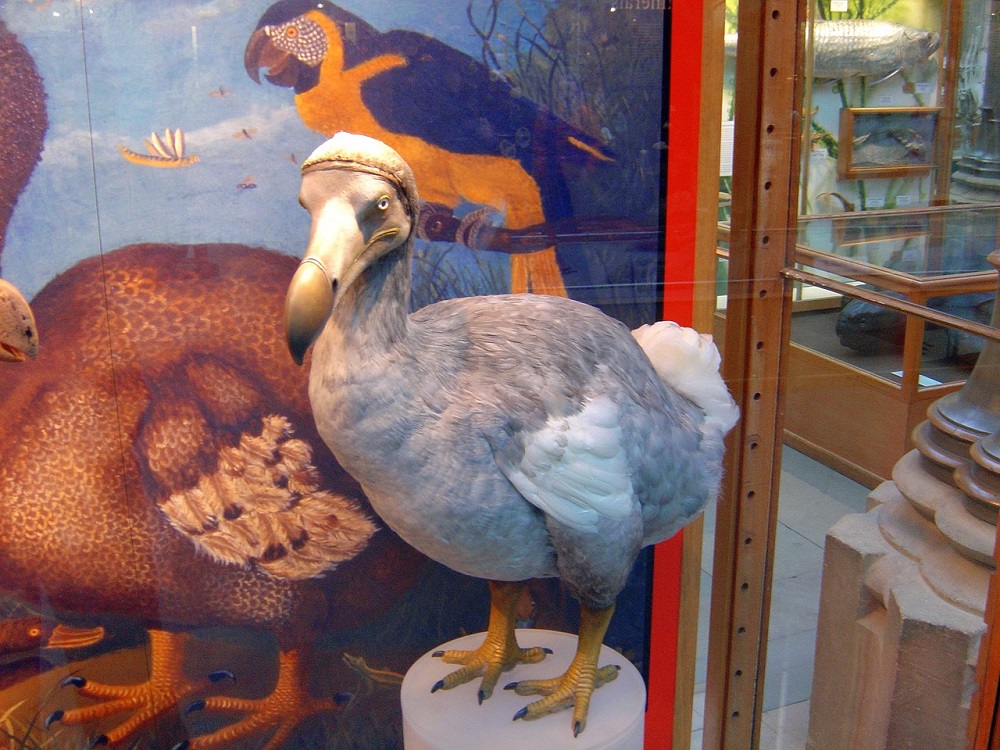
Some Random Thoughts On Mauritius
Shae and I wanted to share some thoughts on our experience in Mauritius. These aren’t going to be fully-fleshed out – just some quick observations from our time there.
Stephen’s Thoughts
One of the main things I took away from our visit was how it didn’t really feel like we were in Africa. I know Africa is a huge continent with huge diversity across it, but Mauritius almost felt like a mix of Asia and the Caribbean. The Caribbean because of it being an island nation and it having beautiful white sandy beaches, while Asia because of its large Indian heritage. Some of its food therefore included a lot of curries, roti-like bread, etc. which was all delicious. In fact, I had three of the best curries of my life while in Mauritius which, being from England that’s home to many excellent curries, is saying something.
The landscape of the island is fascinating too. Being formed from volcanic explosions means there are some interesting mountain formations, as well as black volcanic rock on some beaches, but white sand on others.
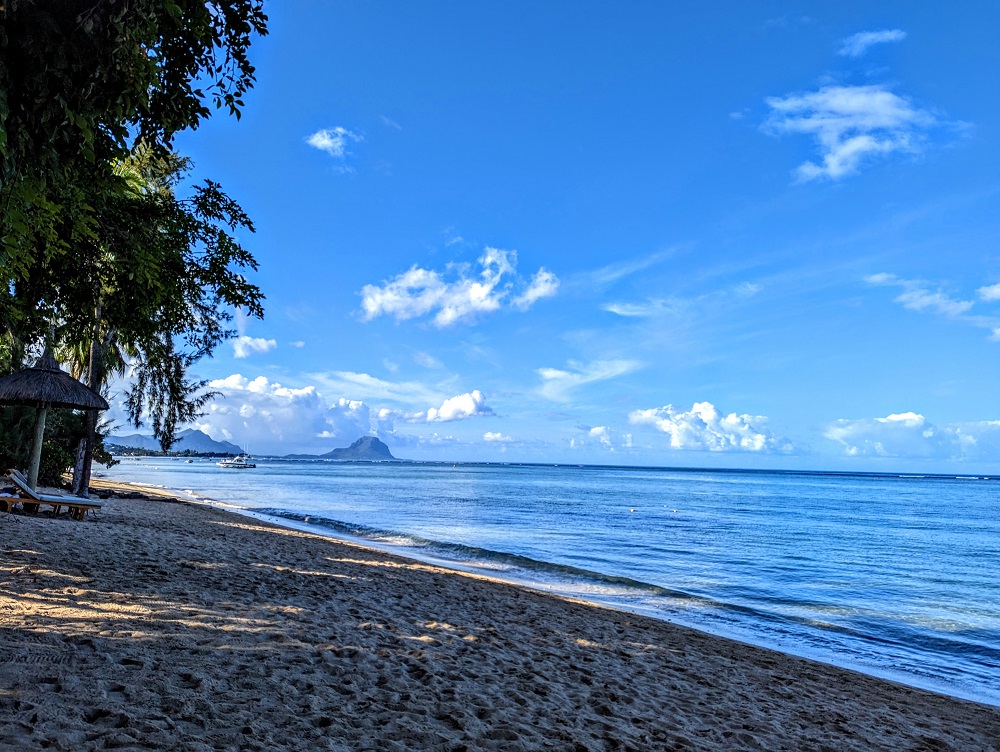
Although I’m sure there’s poverty there, we didn’t really witness any like we have in some other places we’ve visited around the world. It’s certainly not the richest nation in the world, and I’m sure it was hit extremely hard by COVID due to tourism being such a key part of its economy, but it was nice that it felt like the island was thriving. Apparently Mauritius provides universal healthcare, free education and free bus travel for the disabled, elderly and students, so I love that its government can help provide services like that for its citizens.
I’ve already mentioned it, but the food in Mauritius was delicious. Not just the Indian food, but everything we had was excellent. They also make some great rum and we fell in love with Ti Punch – a cocktail made of 50% rum, 25% cane syrup and 25% lime juice. It’s possible that we’ll be making this for ourselves back in the US provided we can find cane syrup easily.
Shae’s Thoughts
I enjoyed Mauritius very much. As an American I have a little bit of a different perspective, especially as one of like… 20 Americans on the island! The most common comment was “American!? That’s so far – like two flights!?”
I agree with Stephen though, it was more “Caribbean-like” than not, so I’m not 100% sold that it’s worth the 20 hours of flying from the US to get there unless you are a) already coming to that side of the world or b) want to go to every country in the world (like we do!)
However, the Asian influence definitely makes it feel different from the Caribbean in many ways, between the Hindu temples and mosques and the heavy curry-influence in the food. You also need to have a more relaxed attitude towards expected service levels compared to US service expectations, etc.
All of that being said, Mauritius is a welcoming and beautiful place. The lush greenery combined with the mountains (were they mountains? They weren’t really hills or mountains… peaks maybe?) and the history of the place made it really interesting both visually and intellectually. I loved learning all about the sugar cane, how it grows, is harvested and what products it’s made into that support the economy of the island.
One thing I was very disappointed in was the animal situation. Mauritius has so many wonderful things going for it and when you Google “animals on Mauritius” you see tortoises, lizards, and other mammals. Upon arrival, you find out that most of those animals are in captivity. Mauritius doesn’t have indigenous animals (or people), only those that were introduced through colonization. So the amazing giant tortoises can only be seen through fences rather than in the wild. The lizards do run amok though! We saw a few at the two resorts we stayed at and they brought a smile to my heart. As far as larger mammals, they do have lions, but again, they’re in a wildlife park. I loved the idea that you could walk with them, but as I researched (because despite loving animal experiences I only want to support those that are based in sound ecological or conservation methods) many lions that are walked with are drugged. That’s not necessarily the case on Mauritius (it was more referring to South Africa), but upon reviews the wildlife park on Mauritius seems to have suffered tremendously in recent years and we didn’t want to support that endeavor.
We were able to swim with one wild animal… a sea turtle! And that made my whole trip worthwhile. The birds are also really fun. Stephen keeps saying I’m going to become a “birder” which we dread since “that’s what old people do.” I told him that seeing and appreciating tropical birds in a new place is totally different than seeing the sparrows and robins that are local to your home, but he’s still skeptical. But if you are a birder… Mauritius should provide you with a lot of fun with your binoculars.
One thing I would say is use recommendations of drivers. We’ll share our favorite driver in a future post where we’ll share everything we did and I’d hire him in a second for a day trip. The whole island only takes 1-2 hours to cross by car. Otherwise, it’s a bit of a mixed bag. We did both regular taxis arranged by the resort and a tour through Viator. You have to be really clear with your expectations for the day; we had a rushed and less enjoyable tour on one of our final days and upon reflection it’s because we expected one thing and the driver expected another.
I loved staying at the resorts. We don’t do that very often, so it was fun to just wander to pools and dinner and have drinks available upon request. But, you should definitely try and explore off the beaten path. Particularly with regards to food. We went for dinner at a local place four nights in a row and had something different, and amazing, every night rather than having dinner at our hotel. Don’t be afraid to go off resort. Explore and learn more about the culture and the people. Ask questions and find out about the amazing history in the location you’re in. In Mauritius, that meant learning about the indentured servants that came over from India after the end of enslavement. We learned how colonization affected the island both politically and culturally. It gave us a greater appreciation for the landscape and the people.
See All Posts From This International Trip
- Lions & Quokkas & Scorpions, Oh My: A Month In Australia, South Africa & More
- We Were Denied Boarding To Australia – Here’s Why
- Flight Review: Lufthansa Business Class – Dallas-Fort Worth (DFW) To Frankfurt (FRA)
- Flight Review: Eurowings Discover Business Class – Frankfurt (FRA) To Mauritius (MRU)
- Some Thoughts On Mauritius
- Hotel Review: Hilton Mauritius Resort & Spa
- Hotel Review: Le Méridien Ile Maurice (Mauritius)
- Restaurant Review: Sunset Filaos In Pointe Aux Piments, Mauritius
- 20 Fun & Interesting Things To Do In Mauritius (+ Many Bonus Ideas)
- Hotel Review: Holiday Inn Mauritius Mon Tresor
- Flight Review: Air Mauritius Economy Class – Mauritius (MRU) To Johannesburg (JNB)
- The Awesome Drive Between Johannesburg & Kruger National Park
- 50 Animal Photos From Kruger National Park In South Africa Taken With Our Phones
- Kruger National Park: 13 Tips For A Successful Self-Drive Safari
- Elephant Kisses – Meeting Tswale In South Africa
- Kruger National Park: 30 Photos Taken With Shae’s Nikon Camera
- Doing A Kruger Park Bush Braai With Royal Safaris
- Marloth Park: Like Living In The Best Zoo Ever
- Hotel Review: InterContinental Johannesburg O.R. Tambo Airport, South Africa
- Flight Review: Qatar Airways Business Class (Qsuites) – Johannesburg (JNB) To Doha (DOH) To Miami (MIA)
- Hotel Review: Hyatt Regency Oryx Doha, Qatar
Hey S&S – glad you enjoyed your trip to Mauritius overall, especially the food. That’s definitely something I miss; you can get Mauritian food in London, Paris, or even Montreal, but not in the US sadly. I’m a little surprised that the animal situation was not what you expected. As far as I could tell, the large animals are treated well and have a fair amount of space at Casela nature park, but perhaps you were expecting larger parks and animal populations in the wild than there is space for in Mauritius. Anyway, I think it’s fantastic you were able to spend two weeks in my homeland and I appreciate that you took the time to explore and learn about the history and culture that made it what it is today 🙂
Hi Vincent!
We based our decision not to go to the wildlife park based on reviews since the pandemic. And yes, I didn’t know much about it and figured the tortoises were more like on the Galapagos. I didn’t realize they’d all been brought there.
Overall though it was still great! My turtle swim made up for it 😍
Totally fair; we didn’t read the reviews before we went in 2021. You weren’t wrong, just a little late (by ~400 years) when the giant tortoises were plentiful and roamed around freely… then the Dutch showed up and were hungry 🙁 I will embarrassingly admit that I had no idea you could swim with turtles, but I’m glad you managed to do that!